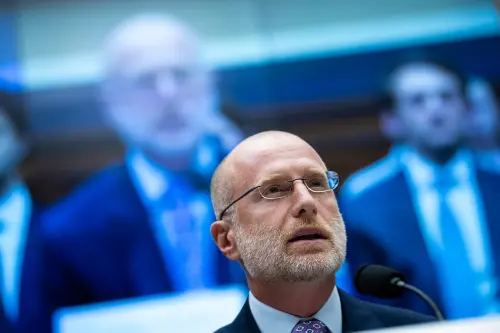Since Donald Trump won the election and announced plans for a massive infrastructure program, a diversity of sources has offered advice on how to include broadband—particularly rural broadband—in the initiative. FCC Chairman Ajit Pai suggested the plan specifically target rural broadband and anoint the FCC to administer the funds. A bipartisan group of senators urged the administration to prioritize and directly fund rural broadband projects. I, along with an expert on federal universal service funds, argued that the plan should include a dedicated one-time rural broadband acceleration fund to be administered by the FCC.
While the public still has no more than a leaked plan and vague State of the Union statements of aspirations, it appears the administration hasn’t adopted any of these ideas. Even worse: I believe the proposed approach will end up delivering little of the abundant bandwidth the country’s rural areas need to thrive in the digital age.
The original source of the rural broadband problem is how the administration apparently proposes to divide total investment. The leaked plan creates various buckets, with each getting a set allocation of the federal dollars. Right away, half of the funding will go to “core infrastructure projects” that does not include the telecommunications sector. The remaining dollars are split among: transformative projects (10 percent); rural infrastructure projects (25 percent); a Federal Credit fund to boost support for current federal lending programs (7.05 percent); and several smaller buckets for which broadband would not be eligible.
At best, broadband would always compete with other categories of infrastructure. Further, broadband likely will fare poorly in that competition.
First, the transformative projects bucket will be administered by the U.S. Department of Commerce and provides the federal government complete discretion in allocation. The plan says the funds will be spent on “exploratory and ground-breaking projects.” While broadband could be included, it is hard to argue that any specific rural project would meet that definition.
Given the administration’s discretion over this fund, it will likely be used for projects that the president can point to as proof points for his effectiveness in the 2020 reelection campaign. Individual projects that bring broadband service to discrete rural areas that can parallel what many urban areas enjoy today (though still distant to what they will be enjoying by then) does not strike me as likely to appeal to the president’s political instincts.
Interestingly, that bucket could include projects designed to accelerate 5G or Internet of Things deployment. As we recently saw, however, with the universal panning of a National Security Council plan to accelerate 5G deployment with a federally funded plan, the politics of funding deployment of networks that compete with privately funded networks is problematic and will ultimately limit any use of funds in this bucket for broadband.
Second, the credit program is similarly unlikely to prove significant. Using the $200 billion figure most presume would be federal spending under this proposal, only $14 billion is left to be divided among the four specified funds. If divided equally among the funds, the rural utilities service would receive an additional $3.5 billion, identical to the $3.5 billion the service provided through the 2010 Recovery Act Broadband Initiatives Program (BIP). That program received significant criticism, and it is likely, in my view, that necessary efforts to prevent similar problems will inevitably slow its distribution and lessen its impact. In any event, the scale of the funding, as was true for BIP, is not likely to significantly narrow the rural broadband divide.
The big question, then, is how broadband fares in the rural bucket designed to receive 25 percent of the funds, or roughly $50 billion. These funds will be distributed to governors according to a formula, leaving the states with full discretion over allocations to eligible uses. All states have institutions, like Departments of Transportation and Water Resources, with expertise in identifying specific needs and allocating funds for transportation and water resources. By contrast, while all 50 states have created broadband task forces or commissions, few have permanent institutions with significant experience allocating grants to rural broadband. This institutional imbalance will likely lead to more effective lobbying for non-broadband uses.
Further, to distribute the broadband funds, a state will have to address a number of thorny issues, similar to the issues the U.S. Departments of Agriculture and Commerce faced with their broadband grant programs in 2009. These are not insurmountable, but they will only intensify most governors’ instincts to allocate money to programs where there is a pre-existing institution and process, as it would mean that the money will be spent sooner and the result will be more quickly apparent to constituents (by which I mean voters).
The Trump Administration is not the final word on the infrastructure plan. As Congress considers advancing infrastructure legislation, majorities in both parties might well agree that some funding should be specifically dedicated to rural broadband; that the FCC, which does have significant institutional expertise in distributing funds to rural broadband projects, should have the principal role in distributing the funds; and that the funds should be distributed to work in harmony with the current Connect America Fund (CAF) and seek to solve some of the problems CAF cannot. But we are a long way from that result.
Of course, the lack of a dedicated rural broadband fund is not the only troubling question mark. The big unknowns include how state and local governments are going to pay their share when their ability to raise taxes has been undercut by the president’s budget proposals and the newly enacted tax bill, as well as figuring out what the source of the federal contribution will be. The many uncertainties, in combination with the structure of the plan, suggest that for rural communities that believe they are being left behind, strategies for self-help are still more likely to succeed than waiting for a surge of federal assistance.
The Brookings Institution is committed to quality, independence, and impact.
We are supported by a diverse array of funders. In line with our values and policies, each Brookings publication represents the sole views of its author(s).






Commentary
Trump infrastructure plan not likely to impact rural broadband
February 2, 2018